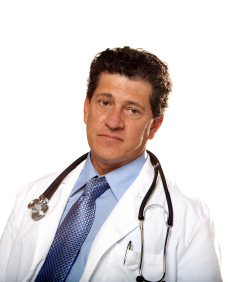Majority of Young European Oncologists Reported Burnout
Almost three out of every four young oncologists in Europe may be experiencing burnout, according to data from the largest burnout survey conducted to date.
Almost 75% of young oncologists in Europe may be experiencing burnout.

Almost three out of every four young oncologists in Europe may be experiencing burnout, according to data from the largest burnout survey of young European oncologists conducted to date.
Results of this survey (Abstract 1081O_PR), which were presented by Susana Banerjee, MBBS, PhD, lead author of the study and a consultant medical oncologist at the Royal Marsden NHS Trust in London, at a press conference at the Congress of the European Society for Medical Oncology (ESMO) in Madrid, are prompting calls for serious action to address the issue.
“Oncologists make complex decisions about cancer management, supervise the use of toxic therapies, work long hours, and continually face patients suffering and dying,” Banerjee said in a prepared statement. “Furthermore, young oncologists are now facing increased administration, complaints/medico-legal issues, increasing expectations, and workload with reduced resources. Taken together, these factors make oncologists at risk of developing burnout, a syndrome characterized by emotional exhaustion, depersonalization (treating people as if they are objects), and loss of meaning or purpose in work.”
Banerjee and colleagues conducted a survey evaluating burnout using the validated Maslach Burnout Inventory and additional questions that explored work and lifestyle factors. They collected responses from 737 oncologists of all ages from 41 European countries. Data from 595 young oncologists, aged 40 years or younger, were included in this analysis; 52% of respondents were trainees.
Survey results showed that 71% of young oncologists reported burnout: 50% reported depersonalization; 35%, emotional exhaustion; and 35%, low accomplishment. Additionally, 22% of respondents requested support for burnout during their training and 74% reported no hospital access to support services.
The researchers conducted additional analyses of the data and found that the rates of burnout differed significantly across Europe. The highest rates of burnout were seen in southeastern (83%) and central Europe (82%), and the lowest rates were in Northern Europe (52%).
Multivariate analyses showed that higher rates of burnout were significantly associated with European region, work/life balance, and inadequate vacation time (P < .01).
The topic of burnout has also recently been explored by the American Society for Clinical Oncology.
A study published in January in the Journal of Clinical Oncology, reported that 44.7% of surveyed US oncologists reported burnout on an emotional exhaustion and/or depersonalization domain of the Maslach Burnout Inventory. Despite this, more than 80% of the respondents reported satisfaction with both their career and specialty choice.
Results of a related study, published in July, looked at burnout and career expectations among oncology fellows. This study showed that 34.1% of survey oncology fellows reported burnout.
Banerjee said that the first step in addressing burnout is to recognize the extent and implications of the problem for the current and future generations of oncologists.
“I believe as a profession, doctors have a duty to try and address this growing issue at all levels-from universities, individual hospitals, and professional societies such as ESMO,” Banerjee said. “Burnout should not be stigmatized as a weakness. We need to support colleagues by focusing on recovery and prevention.”